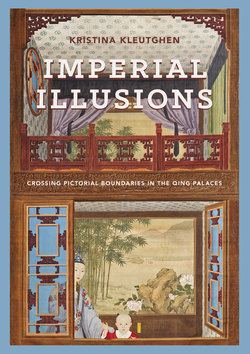Читать книгу Imperial Illusions - Kristina Kleutghen - Страница 79
На сайте Литреса книга снята с продажи.
Оглавлениеstudents still active at the Kangxi court in 1711 used straightedges to create perspective.43 The Palace Museum in Beijing still holds at least ten sets of early modern technical drawing instruments, six of which were produced in the Kangxi workshops and the others imported.44 Kangxi praised the use of such tools for craftsmen: the preface to the Elements of Calculation says that, “only artisans familiar with the square and compass manufacture exquisite work.”45 His use of the term “artisan” here, especially in a mathematical context, distinguishes the maker as a respected trained professional. However, as has been demonstrated when the same term is applied to painters, it immediately marks the products of such instruments and the training required to use them as something other than art.
By beginning with the tools, therefore, Nian also commences an uphill battle against Chinese tradition to counteract the negative perception of using such things in order to create a painting. His is a direct challenge, even specifying particular angles in The Study of Vision and demonstrating the consistent use of the technical drawing tools in creating the images. By using the first illustration in the treatise to actively promote the use of tools to create illusionistic paintings, Nian encourages the reader to focus on subjects and their effects rather than the quality of line, offering an alternative to the literati model of reading ability in distinctive visible brushwork. From the very first image, therefore, The Study of Vision defines the fundamental practices used to create Western-style illusionistic paintings as inherently different from—and even directly opposed to—those used to create Chinese paintings.
Presaging the remainder of the borrowings, Nian’s first illustration includes neither translations of Pozzo’s explanatory text (presented on the drafting board in Pozzo’s original image) nor the chiaroscuro effects in the original engraving. Perhaps Nian simply wanted to make the image as clear as possible; perhaps it was because shadows and shading were often read as dirty marks; perhaps it was because of the difficulty of recreating in Chinese woodblock printing the hatching and cross-hatching for shading that were possible in copperplate engraving.46 Whatever the reasons, these differences between Nian’s and Pozzo’s opening illustrations exemplify the stylistic differences between the two treatises. The rest of the images in the first section of The Study of Vision (4r–18v, including the first image) continue these simplified borrowings from the opening section of the Perspectiva. Unlike the Perspectiva, however, only five of the pages in this opening section contain any text, which is limited to brief instructions presented in vertical blocks on the same pages with the various points used to create lines marked with the Chinese equivalents of A, B, C, D, and so on. From page 8r onward these images are presented without explanation, leaving the reader to puzzle out their content as well as how to produce them. These direct borrowings from the Perspectiva account for the persistent mischaracterization of The Study of Vision as simply an adaptation, translation, or even copy of Pozzo’s treatise. Attributing such influence to the Perspectiva overstates its role both in Nian’s treatise and in China generally: with the exception of the visual (not textual) references to it in The Study of Vision, the Perspectiva seems to have been
